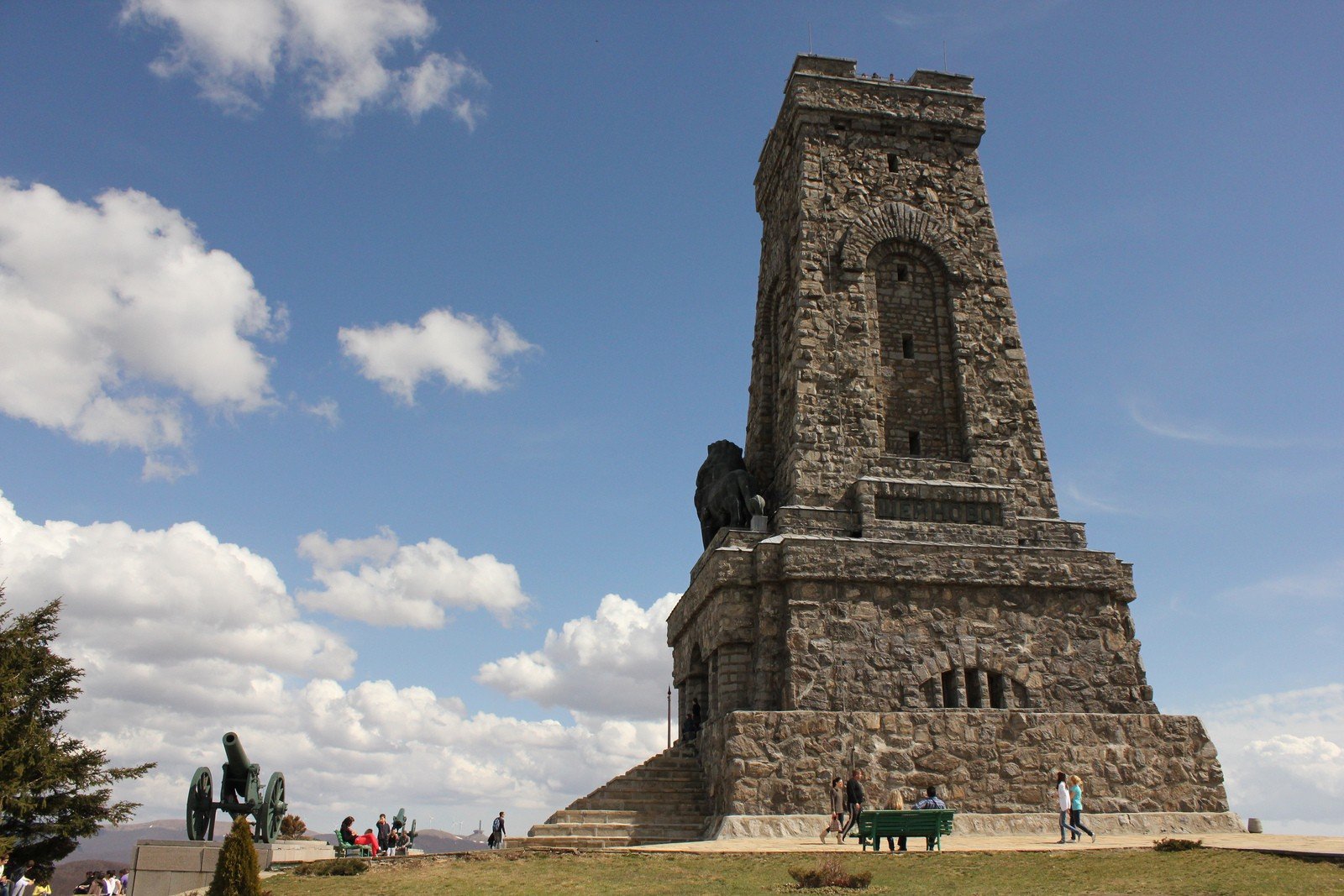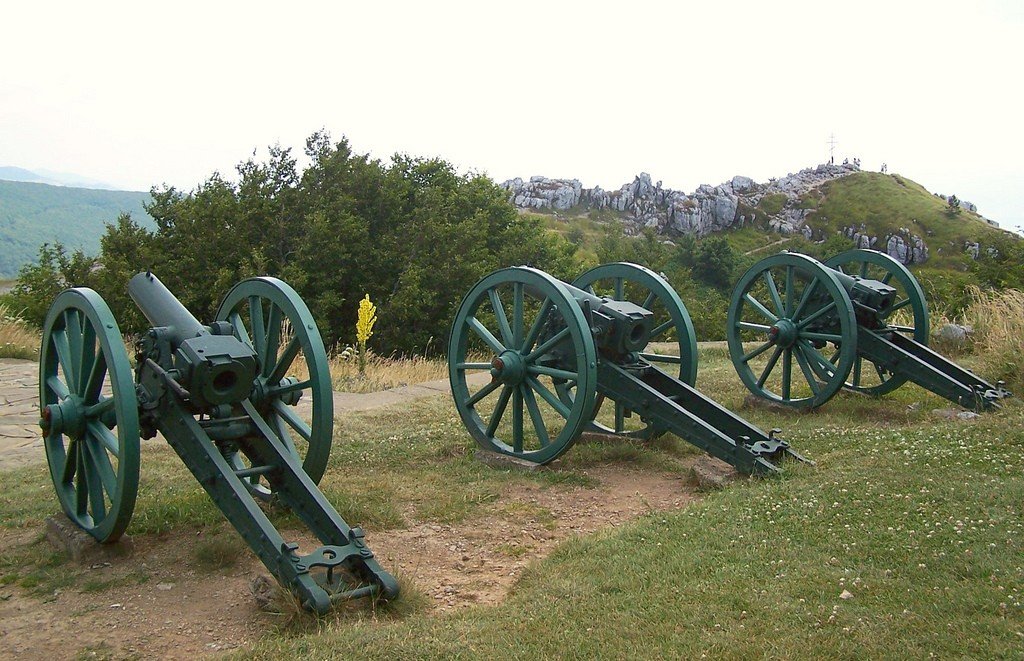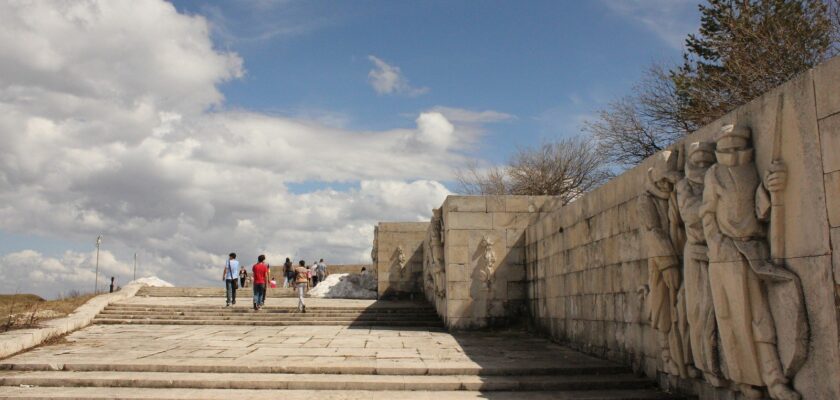Shipka Pass
Shipka Pass is a pass in the Balkan Mountains, through which the highway between the Bulgarian towns of Gabrovo and Kazanlak runs. The pass has a height of 1185 meters and got its name from the nearby town of Shipka. Tourists come here not only for the beauty of the mountain scenery. Most travelers are attracted by the historical significance of these places and war memorials established here.










Highlights
Shipka Pass is famous for being the site of the decisive battle of the Russo-Turkish War of 1877-1878. In memory of the fallen soldiers, a national park-museum has been created in the mountains. Tourists coming to the pass can visit the tall stone Monument of Freedom and look into the picturesque temple.
.
The biggest celebrations at Shipka Pass take place on March 3. On this day Bulgarians celebrate a national holiday – the anniversary of the signing of the Peace of San Stefano, which ended 500 years of Ottoman rule in the country. During the celebrations, a church service is held at the pass and fresh flowers and wreaths are laid at the war memorial. In addition, every year in late summer there is a spectacular reconstruction of the historic battle of 1877, which is attended by tourists from different places in Bulgaria and other countries.
.History of Shipka Pass
The first mention of the Shipka Pass dates back to 335 BC, when Alexander the Great’s troops crossed the Balkans to fight the tribe of Tribals in Northern Thrace. A few decades later, Celtic tribes passed through the pass into the Kazanlak Basin. Archaeologists conducted excavations and found near the mountain pass ancient coins, stone sarcophagi, weapons, ceramics and household items.
.Under the Romans, two important roads were built through the Shipka Pass. The main one went from Nove through Gabrovo and the mountain pass to Andrianople and then to Constantinople. The minor road also started in Nove, but left through Ovcha Mogila, Butovo and Pavlikene, joining the main road in the Gabrovo area.
.In the fourteenth century, the Ottoman Turks came to the Balkans. They were well aware of the strategic importance of the Shipka Pass and stationed military detachments in Shipka and Gabrovo to protect it.
Russian formations first approached the pass during the Russo-Turkish War of 1806-1812. In 1829, after the signing of the Peace of Adrianople, a military unit commanded by General Kiselev, about a month conducted a cartographic survey of the mountain pass and its surroundings. The locals always met the Russians very kindly and helped them with provisions. In addition, the regular units were joined by local insurgents – haiduki, who fought against the Ottoman Turks on an equal footing with Russian soldiers..
Detailed mapping of the Shipki Pass was carried out in 1875 by Russian Colonel Nikolai Dmitrievich Artamonov. Soon the military department issued two brochures about the Balkans, where among other peaks and mountain passes the pass was described.
.
In 1877 in these places there was a decisive battle between the Turks and Russians, which remained in history as the defense of Shipka. It became an important milestone in the formation of Bulgaria, bringing the people of this country the long-awaited liberation from centuries of Turkish yoke.
>
In the 1920s, an orphanage for war invalids was organized in the monastery near Shipka Pass. For several decades, the Red Cross received here Russian soldiers and officers in exile. A military cemetery was set up near the shelter, where the dead were buried. For a long time the old military cemetery was neglected. But a few years ago it was cleared by volunteers, and the area with the burials was opened to visitors.
.
Freedom Monument
The war memorial is located above the saddle of the pass, on Mount Shipka (1523 m). Originally this place was called Mount St. Nicholas, but in 1954 the government of the country wanted to commemorate one of the leaders of the Bulgarian militia in the war against the Ottoman Turks – General Nikolai Grigorievich Stoletov, so the peak was named after him. However, the new name did not take root, and in 1977 the mountain above the historic pass was renamed again.
.
The monument in honor of fallen soldiers and officers was built in 1934 with money raised by Bulgarians. To get up here, travelers must climb several tall flights of stairs – about 900 steps. The stone quadrangular tower is 31.5 meters high. Near its entrance you can see a bronze figure of a lion measuring 8 by 3 m.
.
The lower floor of the memorial houses a sarcophagus with the remains of several soldiers who died at Shipka in 1877, and at the foot of the tower are ancient artillery pieces. The three floors above house museum exhibits. Flags of the Bulgarian army and other military relics are displayed here. From the observation deck, which is located at the very top of the Freedom Monument, there is a beautiful panorama of the Shipka Pass and the surrounding valleys.
.The Church-Monument of the Nativity of Christ
On the south side of the pass, near the small town of Shipka, all tourists and pilgrims stop by an unusual memorial church. The idea to build a church on the battlefields was suggested by the mother of the famous Russian general Olga Nikolaevna Skobeleva. This idea was warmly supported in both countries, so the money for the Orthodox church collected both Russians and Bulgarians. According to the will of the ctitors, the new church was erected as a memorial church, because of which it received the status of a memorial church and monastery.
.
Memorial Church of the Nativity was built in 1902 and opened in the presence of members of the governments of the two countries and generals of the Russian army. The solemn event was timed to coincide with the 25th anniversary of the historic battle for the Shipka Pass. The temple complex included a church, a monastery building, a hotel where pilgrims could stay, and an orphanage. They also wanted to establish a theological seminary here, but for various reasons it was never opened. It is noteworthy that the church standing on Bulgarian soil was for some time subordinate to the Russian Orthodox Church, and priests for it were sent by the Trinity-Sergius Lavra.
.The picturesque church near Shipka Pass is built in the traditions of Moscow architecture of the 17th century. The cross-domed church has three apses and is richly decorated both inside and outside. In its crypt there are 17 sarcophagi in which the fallen warriors lie. The interior painting of the Church of the Nativity was done in 1959. On the walls are fixed 34 marble slabs, on which are immortalized the names of the units defending Shipka and the names of the soldiers who died on the pass. It is noteworthy that the Bulgarians themselves call the soldiers and officers of the Russian Army their liberators.
.
The history of the bells of the Nativity Church is curious. The largest of them weighs more than 11.5 tons. It was presented as a gift to the church by the Russian sovereign Nicholas II. All the bells were cast at factories in Russia, and 30 tons of used shell casings were allocated for their manufacture.
.How to get there
Shipka Pass lies on the road that connects Southern and Northern Bulgaria. You can get to these places by car or tour buses. There is a convenient parking lot near the memorial. The road to Shipka from Bulgaria’s coastal resorts takes about 4 hours.
.